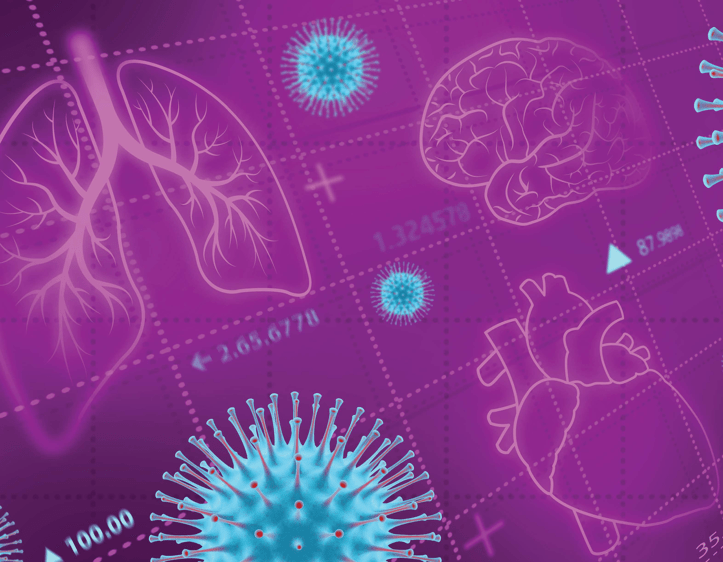
A crisis has led to some big changes for the better.

COVID-19 created challenges that health care providers had never experienced in their careers. But the pandemic, while taking a toll on providers and patients alike, has also enabled the discovery of deep reserves of resilience and innovation. “Many of the changes we’re seeing in health care,” says John Bonamo, MD, Chief Medical and Quality Officer at RWJBarnabas Health, “are good things that came out of a terrible situation.” Here are six examples:
1. The rise of telehealth. The technology for video health care visits has existed for decades, but providers as well as patients resisted virtual care—until the onset of COVID-19 and social distancing.

“Before the pandemic, we were doing some virtual urgent care visits, but not routinely doing scheduled visits,” says Andy Anderson, MD, President and CEO, Combined Medical Group of RWJBarnabas Health and Rutgers Health. “However, at the peak of the pandemic we were doing 10,000 scheduled visits weekly, and even today we continue to do thousands each week.”
The increased demand led to technology upgrades, he says, such as making it easier to have visits that include multiple attendees—patient, family members, other providers or an interpreter if needed.
“Telemedicine has opened up access for patients, who can stay in a home environment to get the health care they need, whether it’s acute, chronic or preventive, and that will continue,” Dr. Anderson says. “We’re moving toward a good balance of in-person and remote appointments so patients can receive care more efficiently and effectively.”
2. Increased awareness of preventing the spread of disease. In response to the pandemic, health care providers have redoubled their efforts to sanitize spaces and even filter the air, and the use of hand sanitizer and disinfectant wipes has become commonplace.
“We’ve always been committed to infection control through our systemwide journey to become a high reliability organization,” says Dr. Bonamo. “We amplified those principles to keep our facilities even safer, such as using new ventilation techniques, employing UV‑C lights to clean rooms, paying continued attention to visitation policies and more.”
3. Enhanced teamwork. “At the peak of the pandemic, the needs were so great that our people began working together much more collaboratively,” says Dr. Bonamo. “Instead of staying in their own lane and handing off a patient or a procedure to a specialist, providers worked together— respiratory therapists teamed with nurses, primary care doctors worked in intensive care units at the elbow of intensivists, and so on. We learned how professionals can be ‘skilled up’ and trained to help in a crisis, and that has broken down levels of hierarchy and increased esprit de corps.”
4. An emphasis on mental well-being. “Mental health has become a bigger issue due to the pandemic. People are afraid of becoming ill, they may have greater financial burdens and they’re missing social interaction,” says Dr. Anderson. “Our behavioral health providers have been very busy.”
All kinds of health care providers are tuning in to their patients’ state of mind. “As doctors, we realize the importance of reaching out to people and asking them how they’ve been doing during the pandemic,” he says. “Everybody has a story, and it’s important for us to take the time to listen and, if necessary, become an advocate or a resource for the patient.”
That kind of outreach is equally important for people who work in health care, Dr. Anderson says: “In the RWJBarnabas Health Medical Group, we set aside time each week to text or call people we work with to see if they’re doing OK, and provide help or a note of encouragement as needed.”
5. A brighter spotlight on health care disparities. “At RWJBarnabas Health, we’ve had an ongoing and important system-wide effort in regard to social justice and anti-racism,” says Dr. Bonamo. “However, the disparity in the rates of COVID-19 sickness and death among people of color was so blatant that it brought many things to the surface and made us, as well as the health care industry as a whole, take a closer look. We’ve realized that saying ‘we treat everybody the same’ isn’t enough because some populations have many more resources than others.” To learn more about RWJBarnabas Health’s Ending Racism Together initiative, visit www.rwjbh.org/endingracism.
6. A new flexibility. “Healthcare is intensely regulated, and because of that we have a tendency to be very prescriptive about what we can do and how we do it,” says Dr. Bonamo. “The COVID-19 need was so intense that we had to learn to be more flexible. For example, medical-surgical floors were turned into ICUs and we learned, OK, it may not be the ICU we would have built, but we can make this work. A lot of the old regulations were lifted during COVID-19, which enabled us to be flexible, but some of what we had been doing was just a result of old habits. Now we’ve expanded our horizons and have become much more nimble.”
Learn more about RWJBH's resources and information about COVID-19.